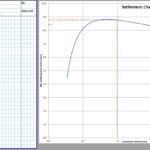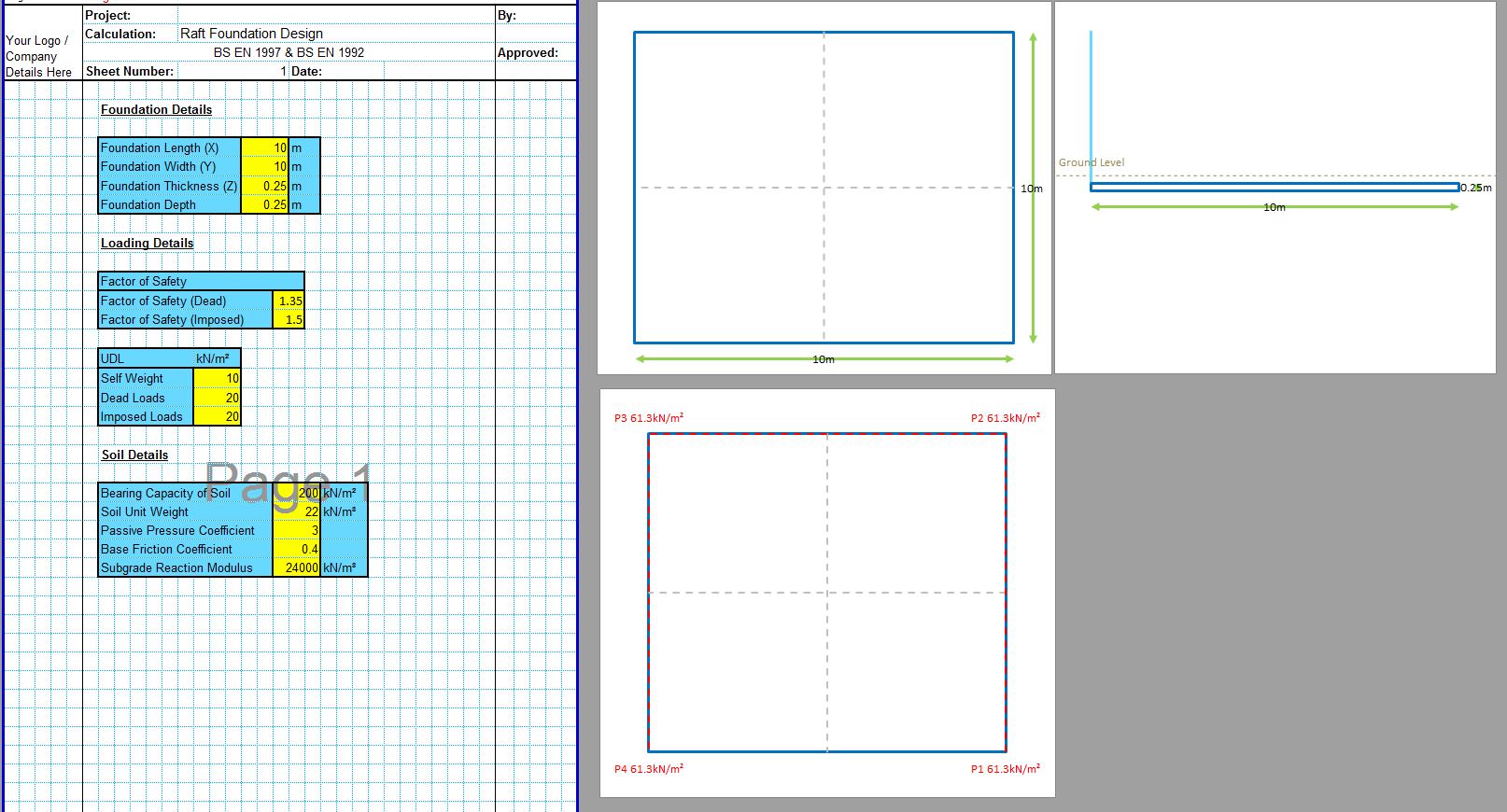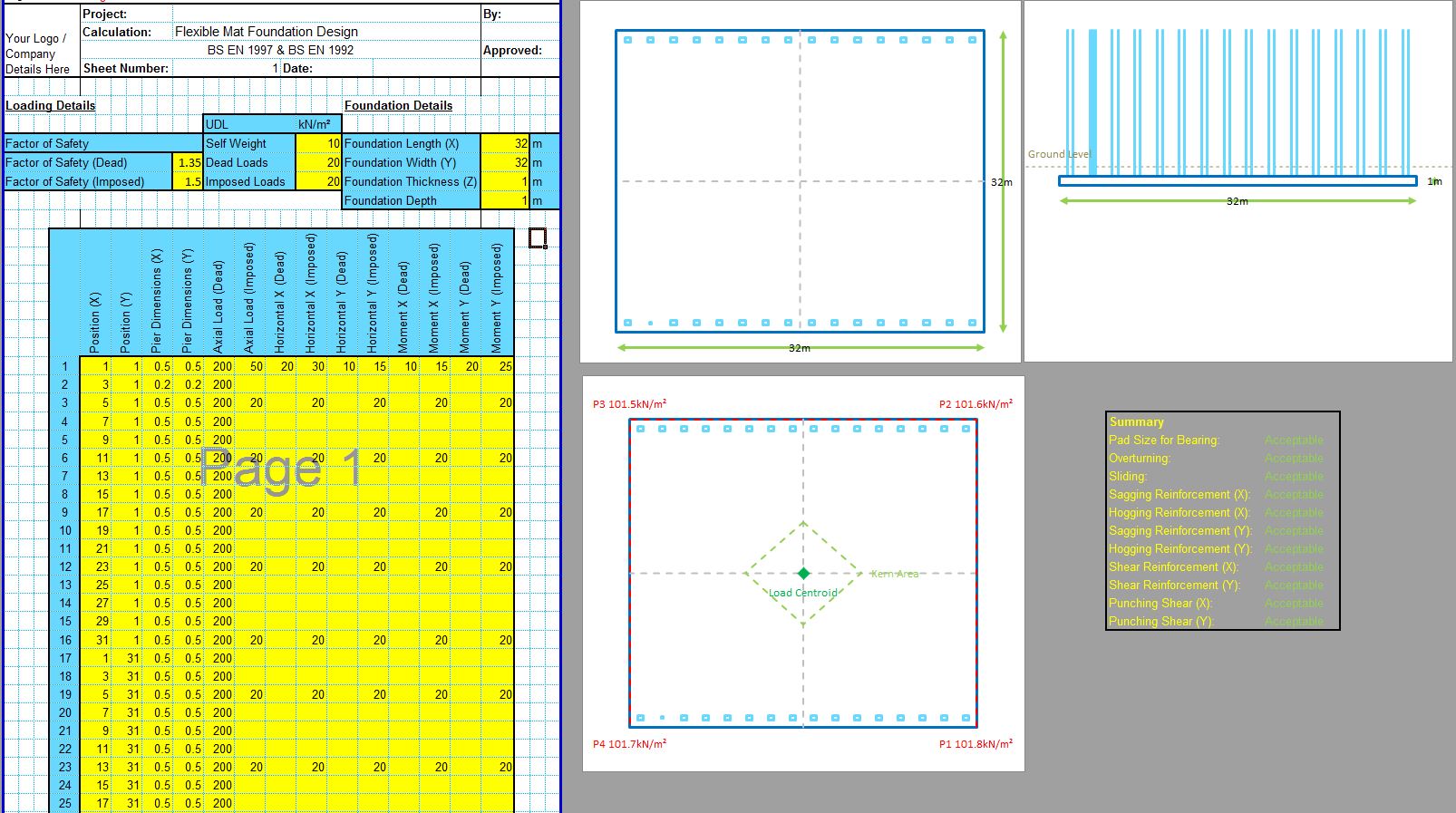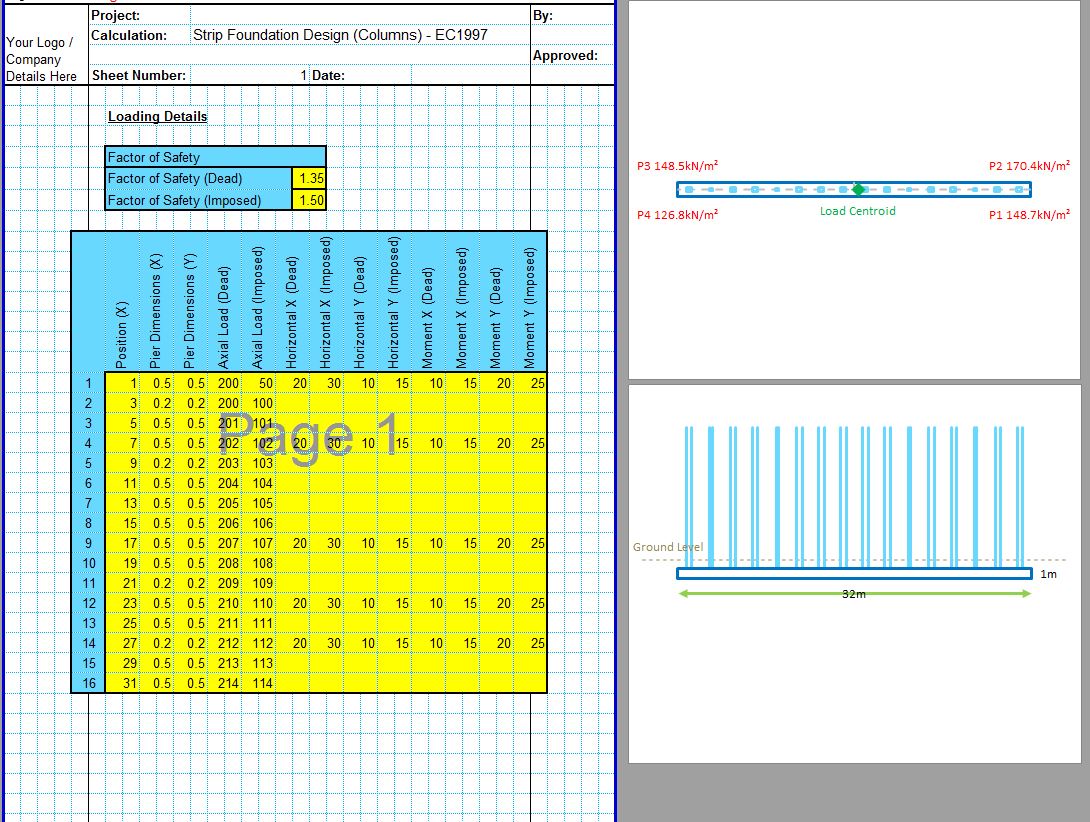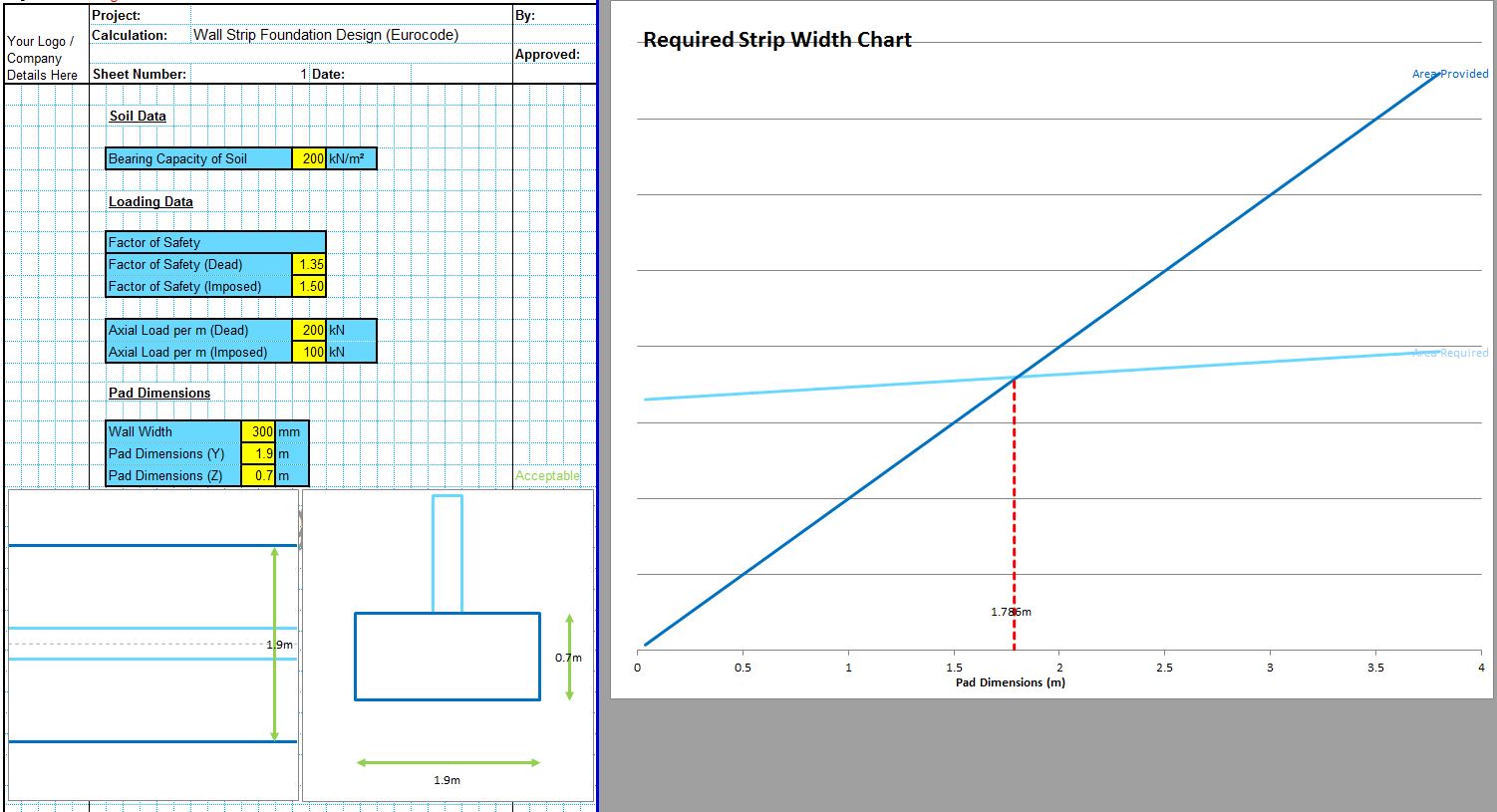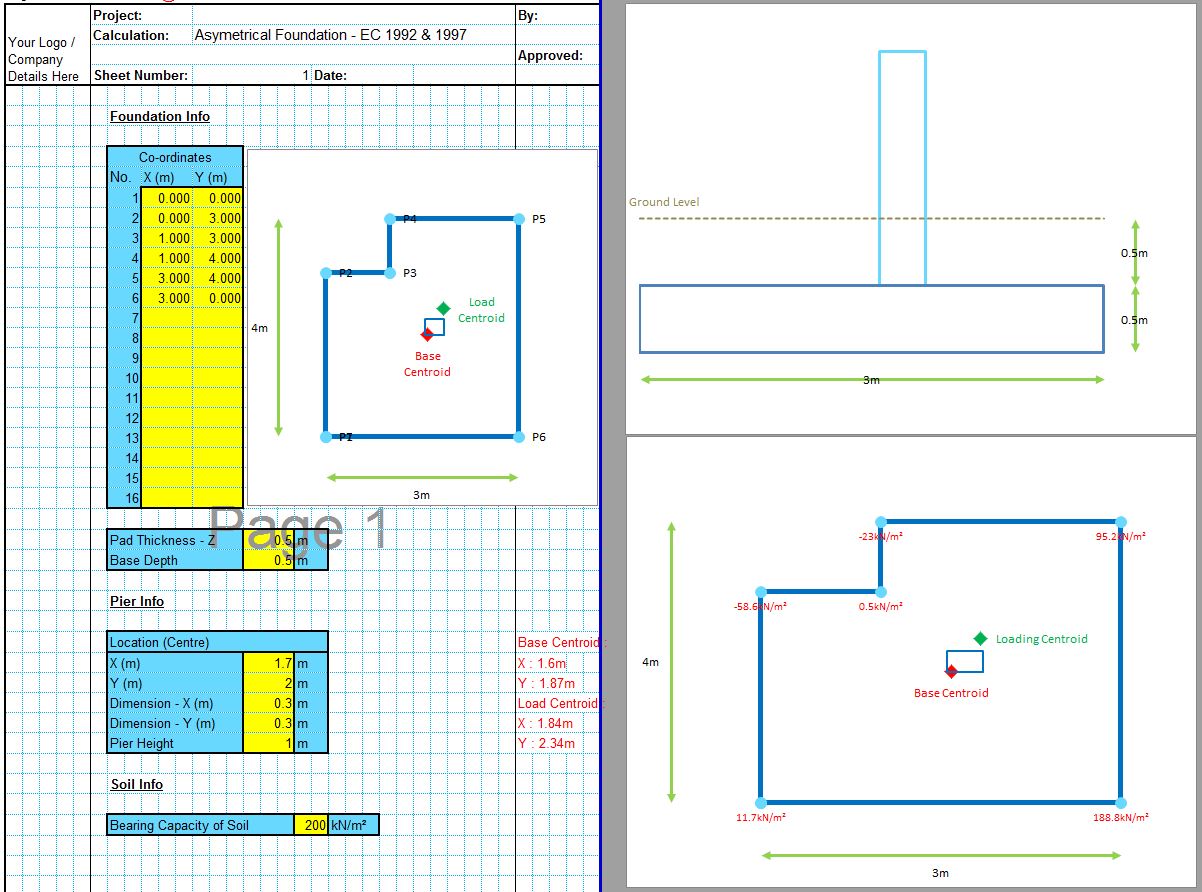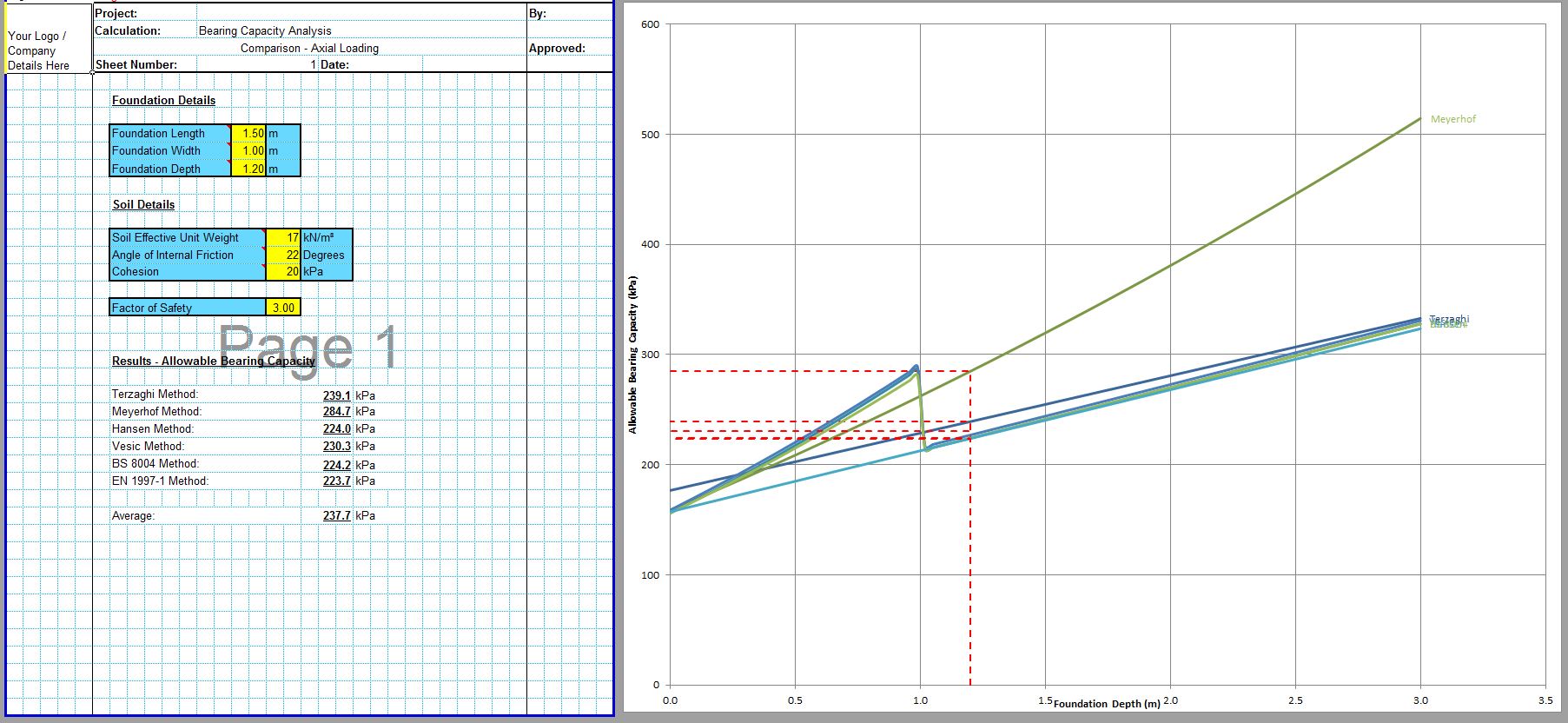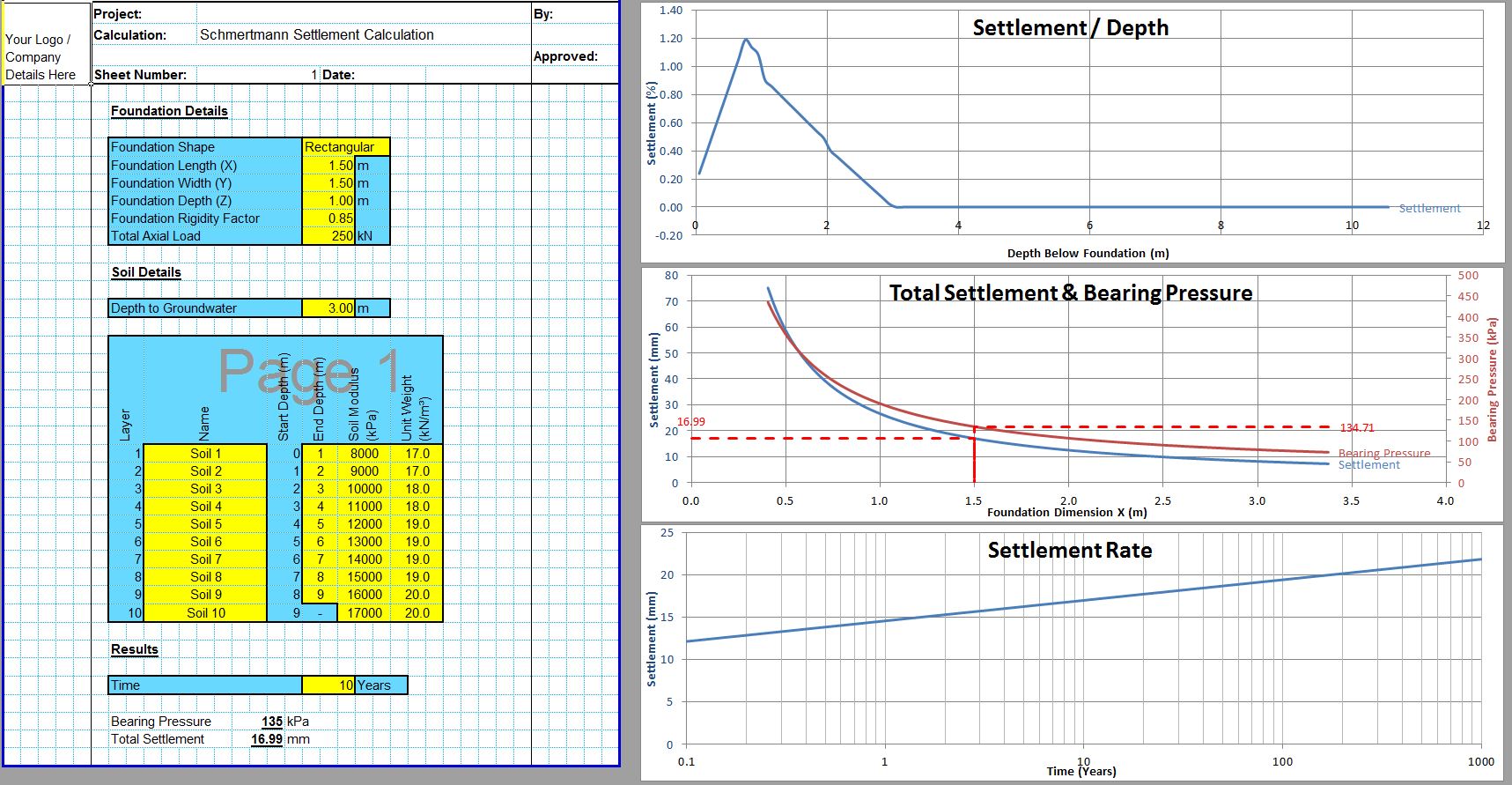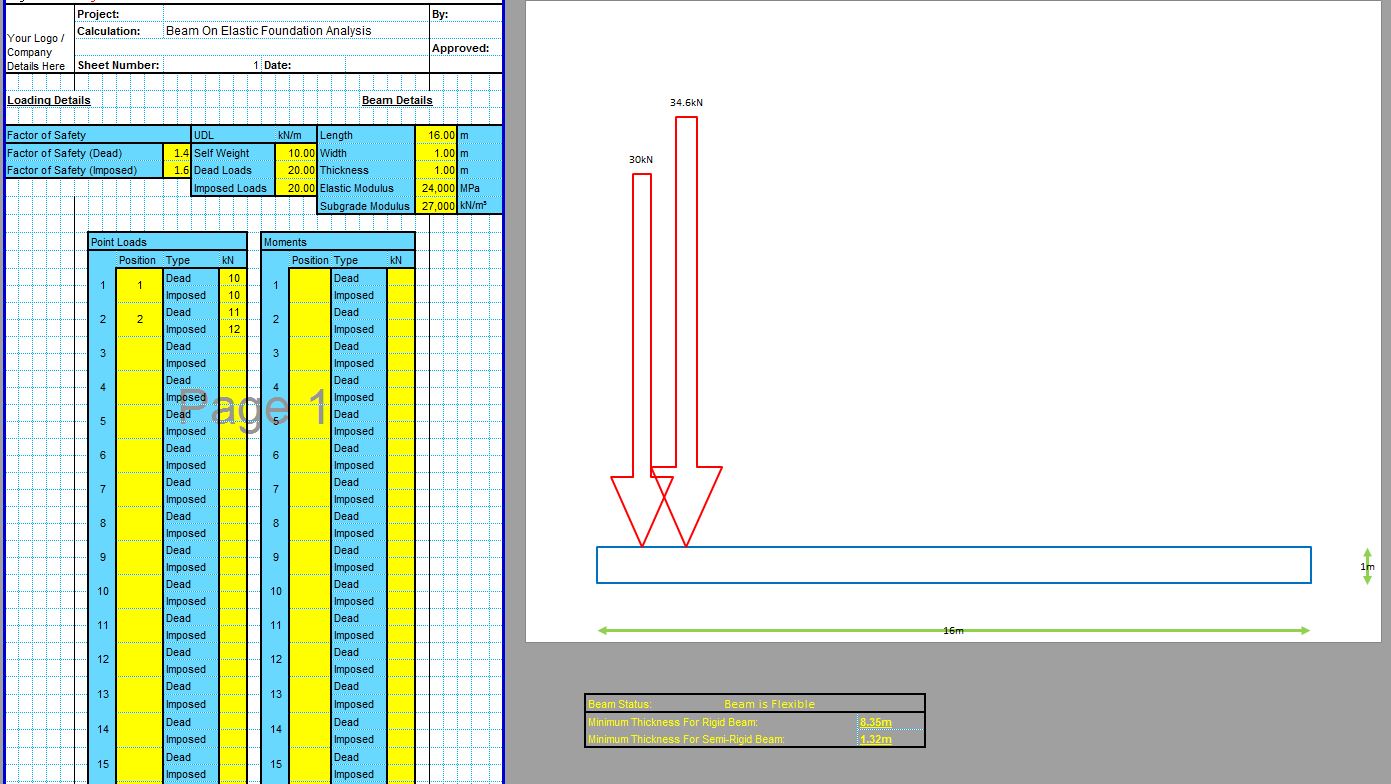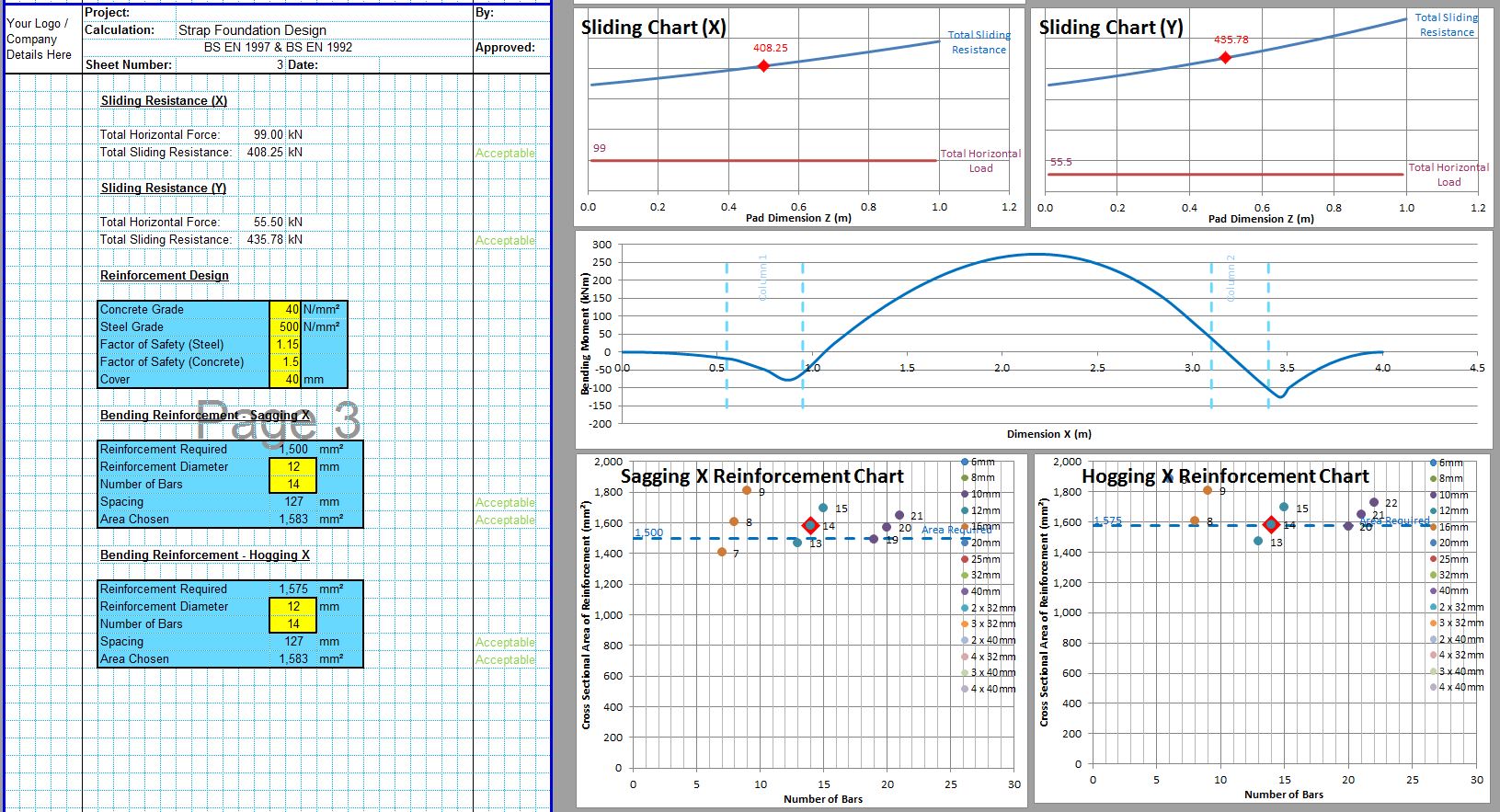The CivilWeb Elastic Settlement Formula Spreadsheet calculates the elastic settlement expected beneath a foundation. The spreadsheet completes these calculations using the classical method using the soils elastic modulus to determine the elastic settlement. The CivilWeb Elastic Settlement Formula Spreadsheet includes unique design and analysis tools which allow the designer to see at a glance exactly how much settlement can be expected from differently sized foundation. The CivilWeb Elastic Settlement Formula Spreadsheet can be purchased at the bottom of this page for just £10.
The Foundation Settlement Calculation Suite includes all 6 of our settlement analysis spreadsheets. This can be purchased below for only £20. Alternatively our best value CivilWeb Foundation Design Suite includes all 12 of our foundation design spreadsheets for only £50, a discount of 80%.
Elastic Settlement Formula
The elastic settlement of foundations occurs almost immediately after the foundation is built and the imposed loads applied. When the load is applied to the soils they initially behave in an almost elastic manner, hence the name elastic settlement. Elastic settlement of the soil is an important part of the total settlement of the foundation.
Settlement of foundations needs to be controlled in order to ensure that the building or structure is not damaged and can still fulfill its purpose. Some settlement of foundations is inevitable and will not cause damage to the structure as long as the total and differential settlement is restricted to a small amount. Different structures are sensitive to different levels of total and differential settlement. Local, national and international design standards often contain suggested maximum values.
As the name suggests part of the elastic settlement will rebound when the imposed loads are removed. Soil is not a linear elastic material but when the imposed loads are far below the bearing capacity of the soil, the soil will behave in a quasi linear elastic manner. For this reason the elastic settlement of a foundation can be estimated with reasonable accuracy using the elastic modulus of the soil.
Elastic Settlement Formula - Inputs
Firstly the design must specify the dimensions of the foundation including the length, width and depth. This information will be used by the CivilWeb Elastic Settlement Formula Spreadsheet to calculate the elastic settlement of the soil and have a large impact on the results.
Generally the designer will choose typical dimensions which the spreadsheet will use for the initial calculation. Then the designer can use the spreadsheets analytical tools to adjust the foundation dimensions to quickly achieve an iterative solution. This is particularly the case where the foundation must be optimised or where there are limitations to a particular dimension, such as the depth for example.
Next the designer must input the loading conditions. The spreadsheet uses a simple total axial load for the calculations. This must include the self weight of the foundation along with the imposed loads. The designer may need to adjust this value slightly if the foundation size needs to change.
Finally the designer must input the soil design parameters including the soils elastic modulus and Poisson's ratio. The spreadsheet then calculates the bearing pressure acting on the soil and uses this to calculate the elastic settlement of the foundation.
The CivilWeb Elastic Settlement Formula Spreadsheet then presents the designer with a graph which shows the expected level of elastic settlement for foundations of different sizes. This saves the designer from having to complete multiple iterative calculations in order to optimise the design. This is particularly the case when a precise maximum settlement is required for the design.
The results of this spreadsheet can also be combined with the results from a consolidation and immediate settlement spreadsheet. These are included in the CivilWeb Foundation Settlement Calculation Suite which can be purchased at the bottom of this page for only £20.
It is common to use typical values for the soil properties for use in preliminary elastic settlement equations. However these properties have a significant effect on the results of the elastic settlement analysis so onsite testing should be undertaken to ascertain accurate values for these parameters before the final design is completed.
CivilWeb Elastic Settlement Formula Spreadsheet
The CivilWeb Elastic Settlement Formula Spreadsheet calculates the elastic settlement expected for the foundation. The spreadsheet calculates the elastic settlement in accordance with the elastic modulus of the soil. The spreadsheet also includes a unique analysis graphs which the designer can use to optimise the design, saving the designer hours of detailed design work on every elastic settlement calculation.
Buy the CivilWeb Elastic Settlement Formula Spreadsheet now for only £10.
Purchase our CivilWeb Foundation Settlement Calculation Suite including all our settlement analysis spreadsheets for only £20.
Or buy our best value bundle, the full Foundation Design Suite including all 12 of our foundation design spreadsheets at a discount of 80%.
Download Free Trial Version
To try out a fully functional free trail version of this software, please enter your email address below to sign up to our newsletter.
Other Foundation Design Spreadsheets;
Foundation Design Spreadsheet Suite
Our full Foundation Design Suite includes all 12 of our foundation design spreadsheets for only £50 (80% discount).
